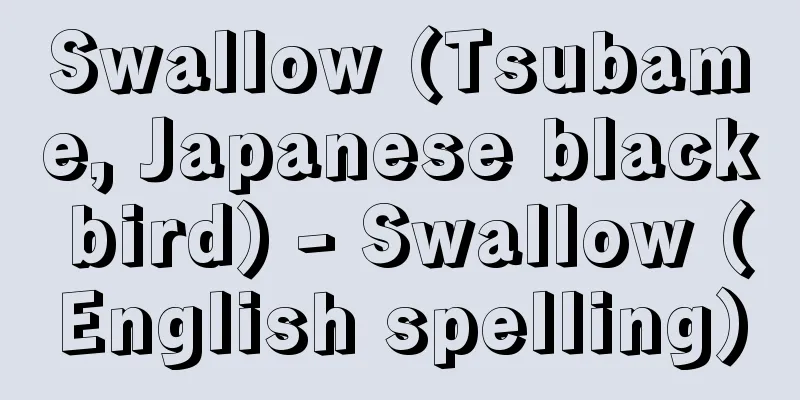Sanro - Sanro

|
Seclusion in a shrine or temple and praying to the gods and Buddhas. During the seclusion period, which may be one day and night (tsuya), 3 days, 7 days, 9 days, 14 days, 21 days, 33 days, 100 days, or 1000 days, people pray, chant sutras, chant the name of the deity, perform gomataki (fire rituals), perform water purification rituals, and fast in order to have their wishes fulfilled. The Kojidan, compiled in the early Kamakura period, contains stories of the miraculous powers of Seta no Amaue, who stayed at Kamo Myojin overnight, Nagayori, who stayed at Ise Naiku for three days, Saint Nittai, who stayed at Hakusan Gongen for 21 days, and Abe no Seimei, who stayed at Nachi for 1000 days. Katsuragawa Myoo-in Temple in Otsu City has 58 wooden sanro-fuda (sandro-cards) from the Middle Ages and 398 from the early modern period that were donated by pilgrims. The oldest one has an inscription from June 1204 (the first year of the Genkyu era), which says that a group of seven pilgrims stayed in seclusion for ten days, and burned 8,000 waterfall gomas over five of those days. There are also sanro-fuda (sandro-cards) from Ashikaga Yoshimitsu, Yoshihisa, and Hino Tomiko. Sanro-fuda is related to private seclusion events. [Akata Mitsuo] "The Myo-o-in Temple Monument, compiled and published by the Gangoji Temple Buddhist Folklore Materials Research Institute (1976)" ▽ "Shinto and Folklore Studies by Kunio Yanagita" (Complete Works of Kunio Yanagita vol. 13, Chikuma Bunko) Source: Shogakukan Encyclopedia Nipponica About Encyclopedia Nipponica Information | Legend |
|
社寺堂に籠(こも)り、神仏に祈願すること。一昼夜(通夜(つや))、3日、7日、9日、14日、21日、33日、100日、1000日などの参籠期間中、礼拝、読経、称名、護摩焚(ごまた)き、水垢離(みずごり)行、断食をし、諸願の成就を図る。鎌倉初期に成立した『古事談』には、賀茂明神に一晩通夜した勢多尼上(せたのあまうえ)、伊勢内宮(ないくう)に3日間参籠した永頼(ながより)、白山権現(はくさんごんげん)に21日間参籠した日台(にったい)聖人、那智に1000日間籠った安倍晴明(あべのせいめい)の霊験譚(れいげんたん)が記されている。大津市の葛川(かつらがわ)明王院には参籠者が納めた木製の参籠札として中世のものが58点、近世のものが398点もある。その最古は元久1年(1204)6月の銘であり、同行7名の行者が10日間参籠し、そのうちの5日間、滝護摩8000枚を燃やしたとある。足利義満(よしみつ)、義尚(よしひさ)、日野富子(ひのとみこ)の参籠札もある。参籠は民間のお籠り行事に通じる。 [赤田光男] 『元興寺仏教民俗資料研究所編・刊『明王院の碑伝』(1976)』▽『柳田国男著「神道と民俗学」(『柳田国男全集 13』ちくま文庫)』 出典 小学館 日本大百科全書(ニッポニカ)日本大百科全書(ニッポニカ)について 情報 | 凡例 |
<<: Saint Laurent (English) Louis Stephen Saint Laurent
Recommend
Gagaku
Music that originated in ancient China and spread...
Zeuzera multistrigata (English spelling)
...The larvae dig tunnels in elms, willows, and o...
Keibiran - Keibiran
A genus and species of lily plant endemic to Japan...
mall
...As an architectural term, it can also refer to...
Black wildebeest - Ojiro-nu
→ Gnu Source : Heibonsha Encyclopedia About MyPedi...
Imitation - Imitation
…Here we can clearly see the precursors of Hellen...
Sioux - Sioux (English spelling)
A general term for three ethnic groups of American...
People's Honor Award
This is one of the Prime Minister's Commendat...
Privy Council (English notation)PrivyCouncil
…The word cabinet was borrowed from French as a n...
Dragline
...Shovel capacity is 0.3-3.1m3, maximum digging ...
Onoe Kikugoro (6th generation)
Born: August 26, 1885 in Tokyo [Died] July 10, 194...
Muscle spasticity
A state of increased muscle tone. In muscle spasms...
The gods are thirsty
...This prompted the author to gradually develop ...
Corruption - Fuhai
This is a phenomenon in which organic matter cont...
Canyon Diablo Meteor Crater - Canyon Diablo Meteor Crater
...Its existence has been known for a long time a...









